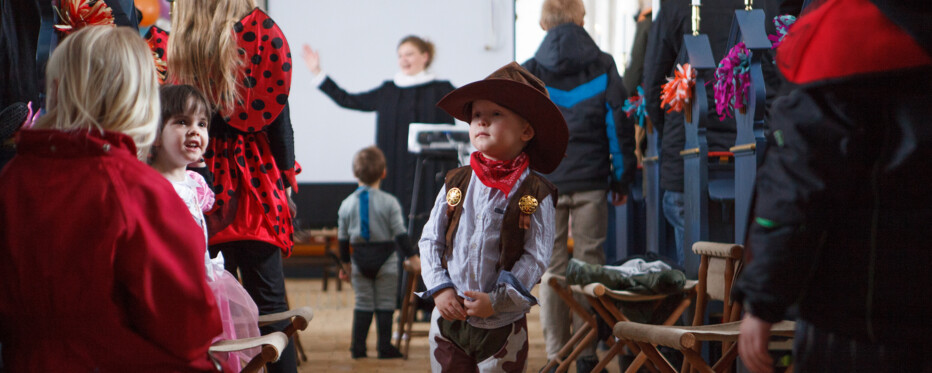Shrovetide is the feast before Lent
The Danish word for Shrovetide is fastelavn, which means "fast-evening". It refers to the fact that the feast is followed by the season of Lent, i.e. 40 fast days before Easter. In church, fastelavn is celebrated on Quinquagesima Sunday which is the Sunday before Ash Wednesday when Lent begins.
From a religious (adult) feast to a children’s festival
The tradition of fastelavn has roots back to the Roman Catholic tradition of celebrating during the days before Lent. In the Middle Ages the Sunday before the beginning of Lent on Ash Wednesday was called Pork Sunday. Likewise Monday was called Pork Monday. On these two days people ate a lot of meat because on Wednesday they would begin fasting. Tuesday was called White Tuesday (today: Mardi Gras) as it was the last day before the 40 fast days where people had bread baked with white flour. This is where the tradition of eating fastelavnsboller, a kind of pastry called Shrovetide buns or Lenten buns in English, comes from. Fastelavnsboller are round sweet buns that are covered with icing and filled with cream and/or jam.
After the Reformation in the 16th century the obligation to fast ceased and fastelavn lost its religious meaning. The feast has become a children's festival where children dress up, go around singing and collecting money and "knock the cat out of the barrel". In the past, there was a live cat in the barrel, as a symbol of evil. The idea of hitting the barrel was to demolish it and chase the cat (the evil) away. Today the barrel is filled with sweets and fruit. Another tradition is the fastelavnsris (Shrovetide rods): branches decorated with sweets, little presents, etc., that are used to decorate the home or give to children. Originally the Shrovetide rod was a fertility symbol.
Shrovetide in the parish churches
Today fastelavn has been reestablished in many parish churches. On Quinquagesima Sunday the churches hold a special family service where children are invited to wear fancy dress. There may be a "children's sermon" that focuses on for example appearances and what it means to hide behind a mask or be in disguise. After the service, the children "knock the cat out of the barrel" and everybody eats fastelavnsboller.



